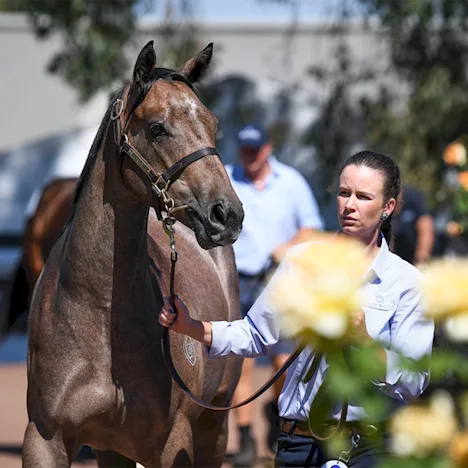Close
Our Products
All Products
Pleasure
Performance
Conditioning
Fibre
Breeding & Stud
Racing
Specialty
Supplements
Quick Feed finder
Free Diet Analysis
The Complete Range
Nutrition Centre
Articles
All About Fibre
Feeding for Condition
Competition Season
Laminitis
Breeding
Foal care
Building Topline
Gut Health
Senior horses
Racing & Breeding
Feeding in a Drought
Tools & Calculators
Competitions / Offers
Our Riders
Brand ambassadors
Junior Squad
About Barastoc
Why Barastoc
Our commitment
Barastoc's People
Our communities
Partnering with KER
Partnering with BHF
Sustainability
Find a Stockist
Contact Us

From sale ring to racetrack – Feeding during the training transition
Most Thoroughbreds destined for the racetrack will endure a short but intense period of yearling prep before entering training as young as 18 months of age, with many racing in their two-year-old year.
Feeding these young horses is a challenge because nutrients must be supplied to cater for both growth and exercise. Additionally, little research has been done to quantify the nutrient requirements of horses this age, particularly during the transition period from untrained yearling to intensely exercised two-year-old.
Ideally the yearling should have been on a sound nutritional program from birth, giving it the best opportunity to develop a strong skeleton, able to withstand the rigors of training. If purchased at a yearling sale, the animal will likely have been on a high plane of nutrition for several months, so it is important to taper off the energy intake if the yearling is going to be turned out for some time before pre-training.
Yearlings fresh from the sales can be maintained on good quality forage (1-1.5% of body weight) including good pasture, and a feed formulated for breeding and growing horses.
If the yearling is a ‘good-doer’ then cutting back the grain concentrate and feeding a low intake concentrated balancer is a good approach to keep the kilos down, while still providing essential nutrition.
Feeding Programs for Two-Year-Olds
Once the yearling has entered the training environment, a real concern for trainers is how differently to feed rising two-year-olds compared with older horses in the stable.
A typical feeding program for an adult horse in race training consists of good quality forage (grass and/or lucerne hay, chaff, pasture turn out if available), grain/commercial concentrate and supplements if necessary.
Forage must be fed at a minimum of 1% body weight per day – that is a minimum of about 4-5kg hay per day. The energy and majority of the nutrients are provided by grain and/or a commercial grain concentrate.
Commercial concentrate feeds are usually fully fortified to contain all the energy, protein, minerals and vitamins the horse needs provided it is fed at the recommended amount (usually about 4-8kg per day) and is fed alongside good quality forage. Some commercial racing feeds are formulated so that you can add your own grain (oats/barley/maize) to top up the energy intake, including Barastoc Race N Win and Barastoc Synergy.
Rising two year olds will require more protein, calcium, phosphorus and trace minerals than mature horses because they are growing as well as working. If we look at an example – a fully grown horse in race training and his rising two-year-old stable mate in moderate work. Both horses are fed 5 kg of high-quality grass/lucerne mixed hay and a 13.0% protein commercial grain mix that supplies 13 MJ DE/kg. The adult racehorse would require 6 kg of grain per day to meet its energy requirement, while the two-year-old requires 5 kg/day. Figure 1 shows how well these rations meet the nutrient requirements of the two types of horses.
Although the hay and grain are not excessively high in protein or minerals, the adult racehorse’s ration supplies more protein, lysine, calcium, and phosphorus than needed because of the high level of intake required to meet the racehorse’s energy requirement. A ration using the same hay and grain mix also meets the nutrient requirements of the two-year-old in moderate work. Again, a fairly high level of intake provides adequate nutrients from feedstuffs containing fairly low concentrations of protein and minerals.
The bottom line from this comparison is that most rations fed to adult racehorses contain adequate protein, calcium, and phosphorus for rising two-year-olds. If energy intake must be restricted in a rising two-year-old (if they’re a ‘good-doer’ for example) higher levels of fortification may be needed. In these cases topping up the diet with a ration balancer would be appropriate.
In conclusion, the nutrient requirements of the rising two-year-old fall between the growing weanling/yearling and the adult performance horse. If the rising two-year-old is in training, feeds that are typically formulated for adult performance horses are appropriate because the elevated level of feed intake required to meet the energy required for exercise will provide the extra protein and minerals needed for growth.
For more information about feeding the racehorse in training or equine nutrition in general, contact the team at Barastoc